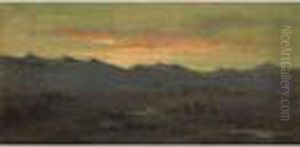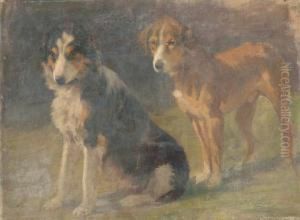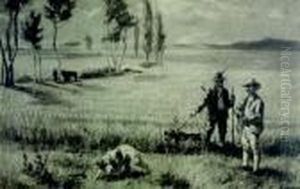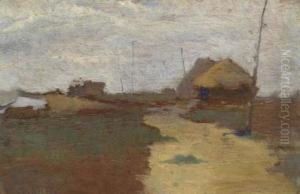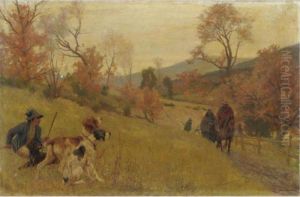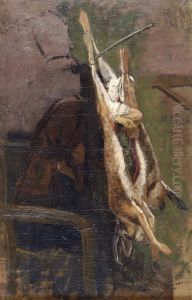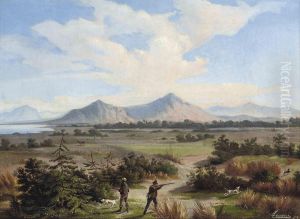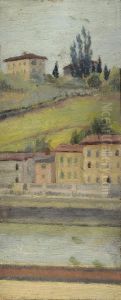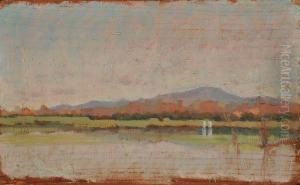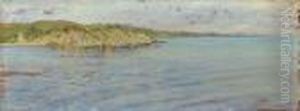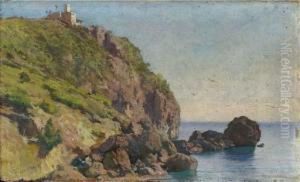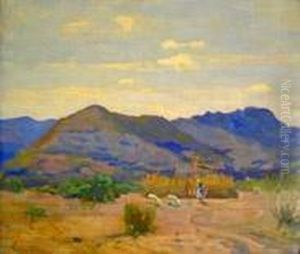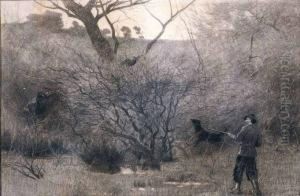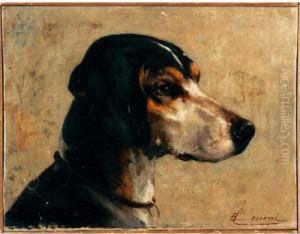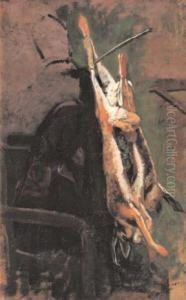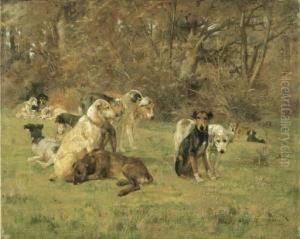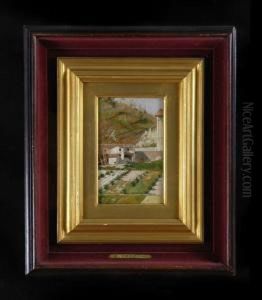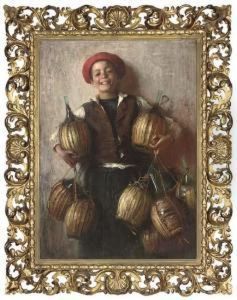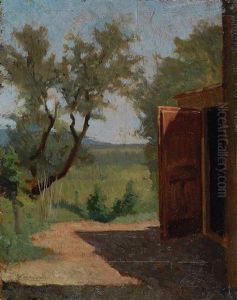Eugenio Cecconi Paintings
Eugenio Cecconi was an Italian painter, born in Florence in 1832. He was known for his landscape paintings and works depicting historical and genre scenes. Cecconi developed an interest in art at an early age and pursued his education at the Academy of Fine Arts in Florence, where he was influenced by the Macchiaioli movement, a group of Italian artists who focused on painting everyday subjects in a natural setting with a technique that emphasized dabs or patches of color.
During his career, Cecconi became recognized for his ability to capture the essence of the Italian countryside, often painting scenes of Tuscany and its surroundings. His style was characterized by a vibrant use of color and a focus on the interplay of light and shadow, which brought a sense of realism and immediacy to his work. Cecconi's paintings often featured rural life, showcasing peasants and their daily activities, which he rendered with sympathy and a keen eye for detail.
Throughout his lifetime, Eugenio Cecconi exhibited his works in various Italian cities, gaining acclaim and the appreciation of art critics and the public alike. His contributions to Italian art were significant, as he was part of the transition from traditional academic painting to a more impressionistic approach that captured the changing light and color of the natural world.
Cecconi's work was also part of the larger European movement towards plein air painting, where artists would paint outdoors to capture the natural light and atmosphere of the landscape directly from life. This approach was crucial in the development of Impressionism, and while Cecconi was not an Impressionist himself, his work shared some of the same qualities in its focus on the effects of light and color.
Eugenio Cecconi passed away in 1903, leaving behind a legacy of beautiful landscapes and genre scenes that continue to be appreciated for their contribution to the Italian art of the 19th century. His paintings are held in various collections and museums, and they serve as a window into the life and environment of Italy during a period of significant artistic evolution.


